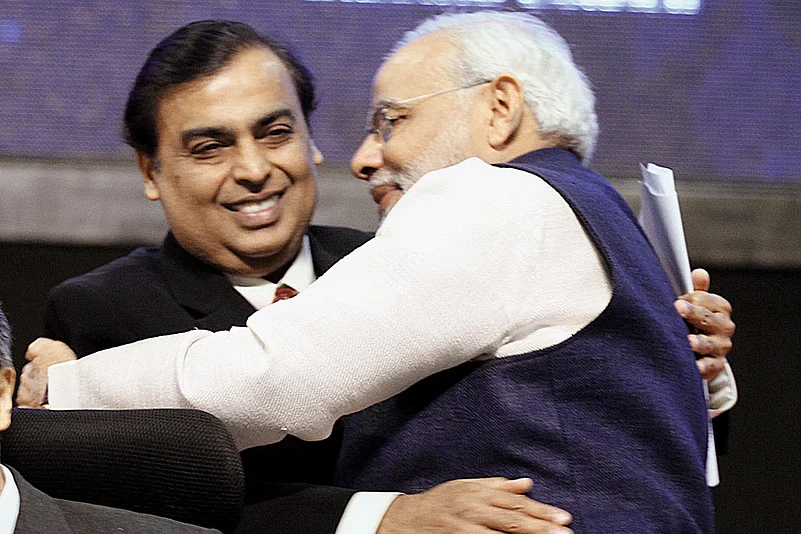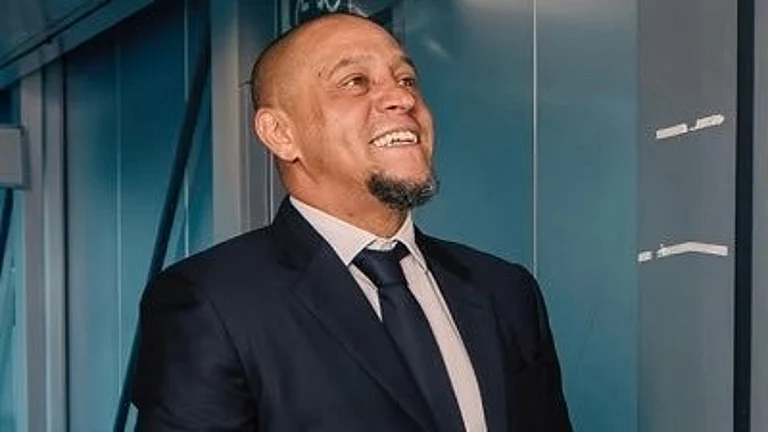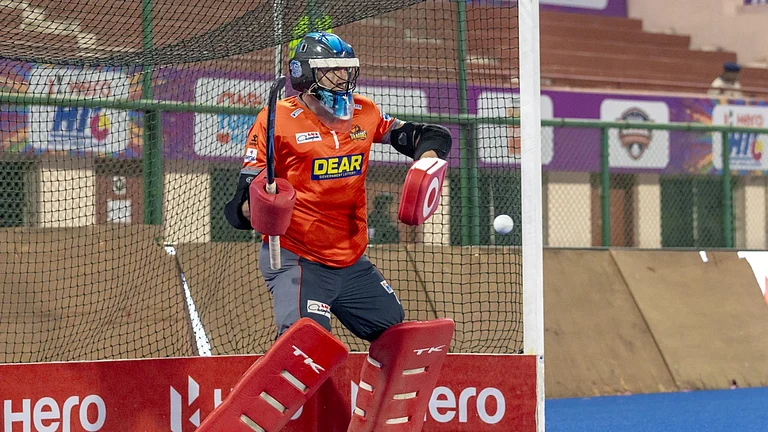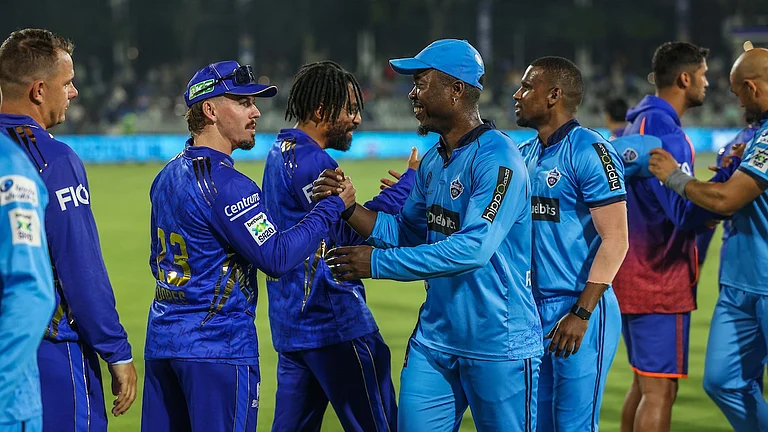Gas Plans
- Modi regime in search of a new energy policy. Headed for showdown with RIL on gas pricing.
- Could overhaul entire gas pricing arrangement
- Getting set to junk Rangarajan formula that doubles prices
- Would like an audit of cost of production of K-G Basin fields
- Possibility of seeking judicial review not ruled out if RIL litigates
***
There are two Gujaratis said to be running the country. The first is the elected prime minister of India, Narendra Modi. The second is Mukesh Ambani, chairman of Reliance Industries Limited, and the elder son of Dhirubhai Ambani, who was born in Junagadh, Gujarat, and is the founder of the empire. It has all along been presumed that Mukesh, whose company has been accused of cultivating politicians to influence policy, would have an easy ride with Modi. There was a quid pro quo between the two, it was alleged in the course of the election campaign.
A month-and-a-half down the line, the script seems to be changing. Sources say Narendra Modi has no intention of allowing such a powerful corporate entity to dictate terms to his government. The PM wants to leave his stamp on India, the source adds, and that would involve pursuing a “viable energy policy that would work in the public interest”.
This could well mean that the NDA does not see the existing policy as being in the public interest. On June 22, there was a meeting between the PM, finance minister Arun Jaitley and petroleum and natural gas MoS (independent charge) Dharmendra Pradhan. A few days later, the cabinet committee on economic affairs ratified the decision to defer the raising of gas prices by three months. An announcement was made the same day, June 25, following which Pradhan said “comprehensive discussions were necessary on the issue. It was decided that consultations would be held with all stakeholders and it was important to keep public interest in mind.”
His words may suggest that this is just a matter of delay, not denial. But sources reveal that the government is actually seeking a radical overhaul of the entire gas policy. Step one is to move towards junking the formula the UPA used for raising the prices. What therefore seems inevitable is that the Modi regime is headed for a showdown with RIL on the gas front as the company has been strongly lobbying for the implementation of the Rangarajan committee formula.
Pradhan, reveals a government source, has been assigned the job of talking to Chakravarthi Rangarajan, chairman of former PM Manmohan Singh’s economic advisory committee, who was tasked with heading another committee that made a recommendation on pricing gas at $8 per unit, almost double the prevailing price at $4.2. The election notification earlier this year had held up this UPA decision. But the new regime in Delhi now has refused to play ball.
If the government does indeed make big changes, it would take away one of the major issues the Aam Aadmi Party had raised in the past year, as it campaigned fiercely about the inflation any potential hike in gas prices would cause. Among the several questions AAP leader Arvind Kejriwal had posed to the BJP’s prime ministerial candidate were: What relations do you and your party have with Shri Mukesh Ambani? If you form the government, would you pay the rate of $4 per unit of gas or $8 per unit of gas to Shri Mukesh Ambani?
Now the answer to the last question seems to be a ‘no’. In fact, according to a source, Jaitley asked petroleum secretary Saurabh Chandra why everything related to gas had been priced in dollars, not in rupees. The view emerging is that the Rangarajan formula is “ridiculous” as it bases the gas prices on some sort of average numbers derived from three foreign gas markets. The question being asked is whether the pricing has been done on “a cost-plus basis or bearing international principles in mind”. The government is also looking into the “gold-plating” of production costs from the K-G basin. There is a view that there are flaws in the contract the UPA signed with RIL—it does not protect the rights of the people.
And all this is happening in the context of another CAG report possibly emerging that would again be strongly critical of RIL, suggest sources. In fact, those who have followed this complex issue closely would remember that former NDA finance minister Yashwant Sinha was chairman of the standing committee on finance in the last Lok Sabha. Its members included Piyush Goyal who is now the power minister. That committee had tabled a report on “the economic impact of revision of natural gas” in Parliament on August 7 last year. The committee had demanded an audit of the cost of production in the K-G basin fields and was of the opinion that there was no guarantee that an increase in prices would bring additional investments but it would certainly place a greater subsidy burden on the fertiliser and power sector, the two biggest consumers of natural gas.
There is, therefore, a continuity in the BJP’s position on gas pricing. What has changed is the fact that it is they who’ll have to balance the books and also deal with the rising costs of importing natural gas. Critics and some experts in the power sector have alleged that RIL has been showing a fall in production, and possibly even hoarding gas till prices are raised. RIL, on its part, has come out with a glossy book titled India Has Never Been Here Before: Facts you did not know about K-G basin that describes this as “one of the more amusing charges”. Hoarding of gas, they say, is technically impossible.
Yet, with the Modi regime seemingly willing to take the Reliance bull by the horns, the possibility of seeking a judicial review cannot be ruled out either, say sources. Especially if RIL hits back with litigation on scrapping the Rangarajan formula. The Supreme Court had got involved in the process during the litigation between the Ambani brothers, Anil and Mukesh, over gas pricing and had on May 7, 2010, delivered a judgement clearly in favour of the elder brother. It was actually Anil’s lawyers who first used the term “goldplating” but which has now gained currency among all those who track the convoluted issue and are critical of the RIL model that is perceived as the epitome of crony capitalism.
The UPA regime is believed to have tweaked policy, changed petroleum ministers twice and set up empowered group of ministers to devise a formula that would help the Mukesh-led RIL. Both Mani Shankar Aiyar and Jaipal Reddy were allegedly divested of their petroleum portfolio at the company’s behest; the former has said so publicly. Two other petroleum ministers in the UPA—Murli Deora and Veerappa Moily—were seen to be very pro-Mukesh. Indeed, the two key advocates of the neo-liberal model, that can at its worst degenerate into blatant cronyism, were the former head of the Planning Commission, Montek Singh Ahluwalia, and former finance minister P. Chidambaram. On occasions when the Manmohan core team was divided, the duo always weighed in on the side that favoured gas pricing arguments put forward by the company.
The new prime minister is supposed to be pro-business, pro-free market and has always advocated less government intrusion in the market, so it’s not clear yet where the dismantling of the current system on gas pricing will eventually lead. What is clear is that if the decisions in the gas sector hurt RIL’s rather deep pockets, they will be strongly opposed and the company’s lobbyists would get active. With RIL’s growing clout and ownership of the media, it is almost certain that media campaigns will also be run against decisions that are not economically favourable to a company that is used to influencing public policy.
It might be relevant at this juncture to recount a little side-story in the RIL-BJP saga. During a stormy stint as disinvestment minister in the Vajpayee government, Arun Shourie had taken many controversial decisions that were opposed by other parties. Among these was the sale of IPCL to Reliance and an attempt to divide the Indian Oil corporation and sell off a chunk to the company. Although he began his innings in the Indian Express as someone who took on Dhirubhai Ambani, Shourie is said to have metamorphosed into someone quite different as disinvestment minister. In the days leading up to the swearing-in and formation of the current government, several economic papers carried stories about how Shourie was a serious contender for the finance portfolio. Shourie camped in Delhi for several days and even gave a few interviews even though he had shifted to the township of Lavasa, near Pune in Maharashtra, several years ago. He had done so after fixing up a rental lease for his home in an upmarket South Delhi colony to a Reliance-owned company. The corporation, it has been suggested, was very keen to place Shourie in some key economic portfolio. That did not happen.
Even before the raising of gas prices was delayed, that decision was seen by insiders and lobbyists as the first sign that this regime might not be as R-positive as the last one.
Corrected online. A version of this appears in print.
























